7 Nights at the 2023 Oregon Star Party

The Oregon Star Party (OSP) was on my shortlist of astronomical events to attend in 2022, but it along with Mt Kobau Star Party (MKSP) was unceremoniously canceled, the former due to road construction and the latter due to wildfires. This year, due to the record-breaking fire season in Canada, I was worried about fires and smoke interfering with OSP, but luckily the forecast promised clear skies, so I packed 3 telescopes and all the gear necessary to survive a week in the desert into my Subaru Outback on Friday, July 14th and started the 833 km (518 mile) drive from North Vancouver, BC to Ocohoo National Forest, Oregon in the afternoon of Saturday, July 15th, stopping a couple of times along the way to get gas and groceries. There was a 2-hour wait at the border crossing, but my Nexus got me through in 8 minutes, although the border guard did question where I was going and why my car was so full.
“So you’re going to look at stars?” He challenged. “Are you being paid for this?”
“I wish,” I thought.
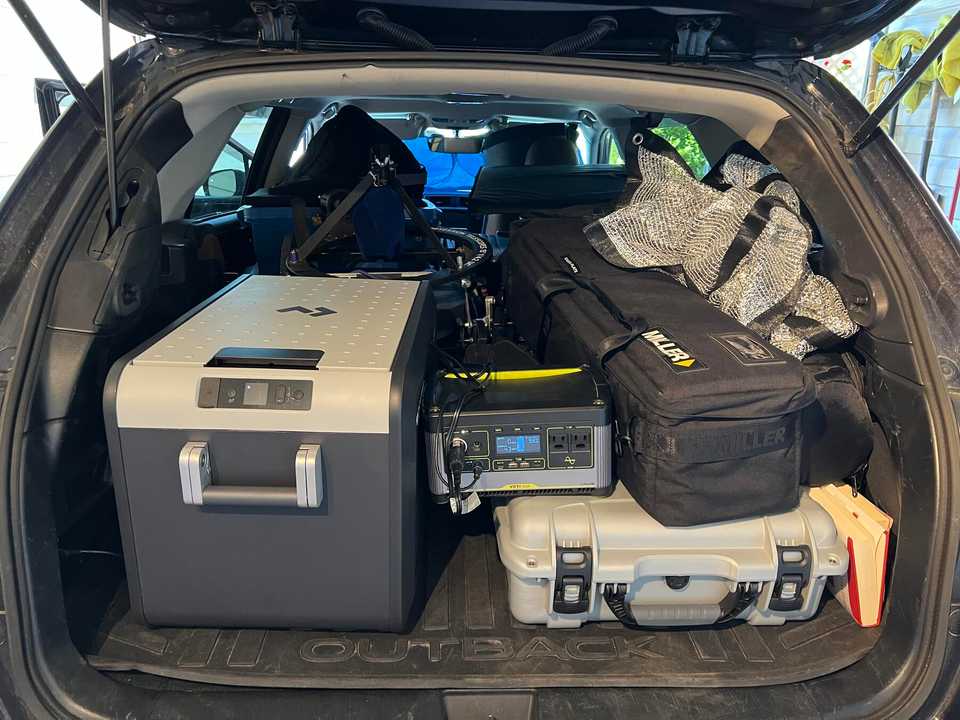
The drive was mostly uneventful, although the traffic passing through Seattle was slow and I started getting tired by the time I reached Portland. I hadn’t quite made up my mind about if I wanted to drive all the way to the OSP site (estimated arrival time, 1 AM) or if I’d stealth camp somewhere along the way, perhaps in Mt. Hood National Forest. By the time I reached Mt. Hood, it was dark, and I decided to continue the drive to Prineville, the nearest town to Ocohoo National Forest. The last stretch of road, 72 km or so, was windy and very dark. I stopped once at a campsite to fill up my two 20L jugs of water - 40L, I reasoned, should be enough for me to survive 7 nights in the dry, hot conditions that were forecast. As I filled up the water from a little faucet, I could see the sky above glittering with countless stars, the Milky Way breathtakingly bright with obvious structure overhead, an auspicious omen of the nights to follow.
I arrived at the OSP site a little past 1 AM and was understandably very tired after nearly 12 hours of driving. As soon as I saw cars and trailers off in the distance, I turned my car off and did my best to cover my car’s lights by taping Reflectix over them. Side note: modern cars need an “astronomy” mode that turns off all pesky lights! I parked off at a distance so as to not disturb the other early arrivers (OSP didn’t begin till two days later on Tuesday, July 18), pitched my tent, and walked over to the row of RVs parked in the distance.
I could make out the unmistakable silhouette of big Dobsonian telescopes as I approached, illuminated by a gentle glow of dim red lights. I passed by one behemoth after another and saw a couple of people observing at the telescopes, but it was very quiet and late and dark and I didn’t want to disturb anyone so I turned back around and went to my car.
I seriously considered going right to sleep, but the stars beckoned and I couldn’t resist setting up my 4” Takahashi FC-100DZ refractor with a wide-angle eyepiece to pan around in the star-rich fields of the Milky Way around Sagittarius. I ended the night by pointing at Saturn, higher in the sky compared to Vancouver due to Oregon’s lower latitude, and marveled at the view for a while, then went to bed.
The next morning, I woke in a daze to the sunrise - it was already starting to get hot in my tent. I packed up my tent, drove to the row of RVs, and parked my Outback proudly alongside. The sun was blazing in the morning sky and I rushed to set up my aluminet tarp to create shade.

Unfortunately, I hadn’t realized that the dry ground was like concrete, making it very difficult to drive my stakes into the ground. Combined with the wind, the stakes kept popping out. Thankfully, my neighbour Steve, who had attended OSP previously and was on the organizing committee, saw me struggling and lent me serious-looking nails and a hammer. That did the trick nicely.
Then I set up my solar panels to charge the battery packs, essential both for running my Dometic 35L fridge (bought last minute in a bout of panic over spending a week in the desert) and my telescope mount.


After making some coffee and cutting up my large collection of fruits, I set up the Skywatcher AZ-EQ6 mount with the 10” Meade ACF and the 15” Obsession.
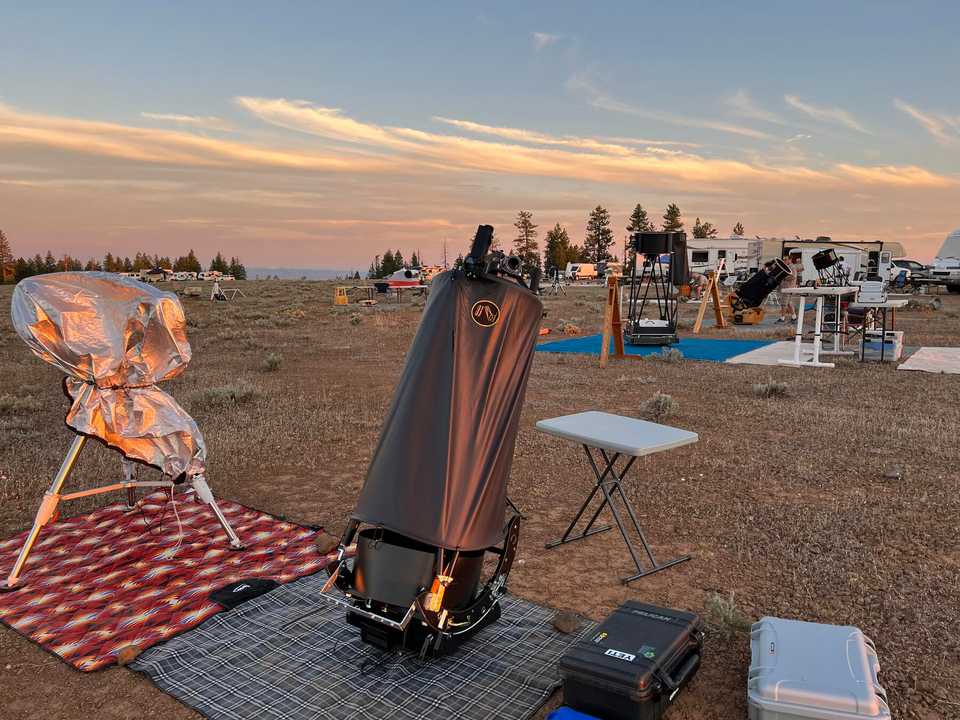
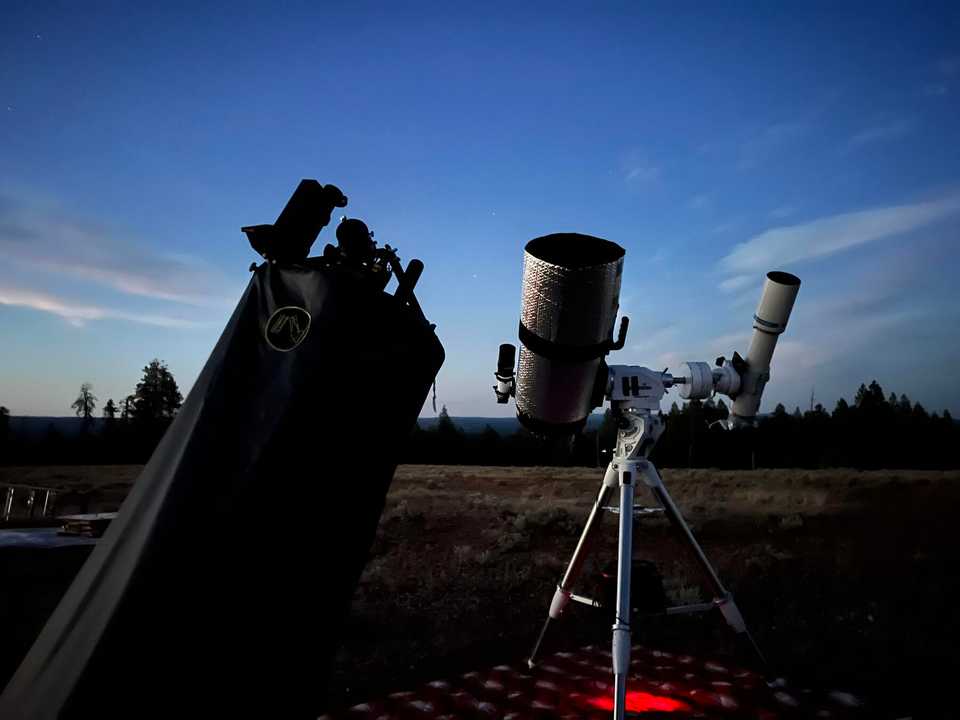
I then introduced myself to the other early arrivers; most knew each other from past Oregon Star Parties and were experienced, hard-core deep-sky observers as well as great people. I knew then that I was going to have a very enjoyable time here.
We killed time waiting for the sun to set talking about astronomy, of course, and telescope making, among other riveting topics.
As darkness fell, astronomers started to stir, pulling the covers off telescopes and fiddling with lasers and knobs to align the mirrors and prepare for a night of observing.
And so started my first real night of observing at the Oregon Star Party, under some of the darkest and most transparent skies on the continent. My 15” Obsession, which is typically one of the largest instruments set up in a given field, was dwarfed by massive scopes all around, including a couple of 22”, 24” and 30” behemoths. Truth be told, I spent very little time observing with my equipment, instead walking from scope to scope, chatting to people and sneaking in some views.

I particularly enjoyed observing with Steve, Dave, and Bhavesh, who were working through the advanced observing list put together by Howard Banich, who was observing not too far away through his spectacular 30”.

One of the first objects I looked at through Steve’s 22” was M51, the Whirlpool Galaxy, and one of my favourite deep-sky objects. It wasn’t even fully dark but the spiral arms were extremely defined, even without adverted vision - an extraordinary view and easily the best view of M51 I’ve ever had.
I walked back to my 15” and pointed my scope at M51 and noted the magnificence of this galaxy being significantly diminished, spiral arms appearing weak and whispy. A 22” mirror, after all, gathers 2.2x the amount of light as a 15”. Aperture fever, in a nutshell.
We also spent an extended amount of time touring around the NGC 6960 and NGC 6992, the Western and Eastern Veil Nebula, as well as the fainter but still impressive nebulousity between these two portions. The Western Veil in particular offered so much rich texture and patterns that it easily rivaled the detail in long-exposure astrophotographs minus the colour, since the rods in our eyes are not sensitive to colour.
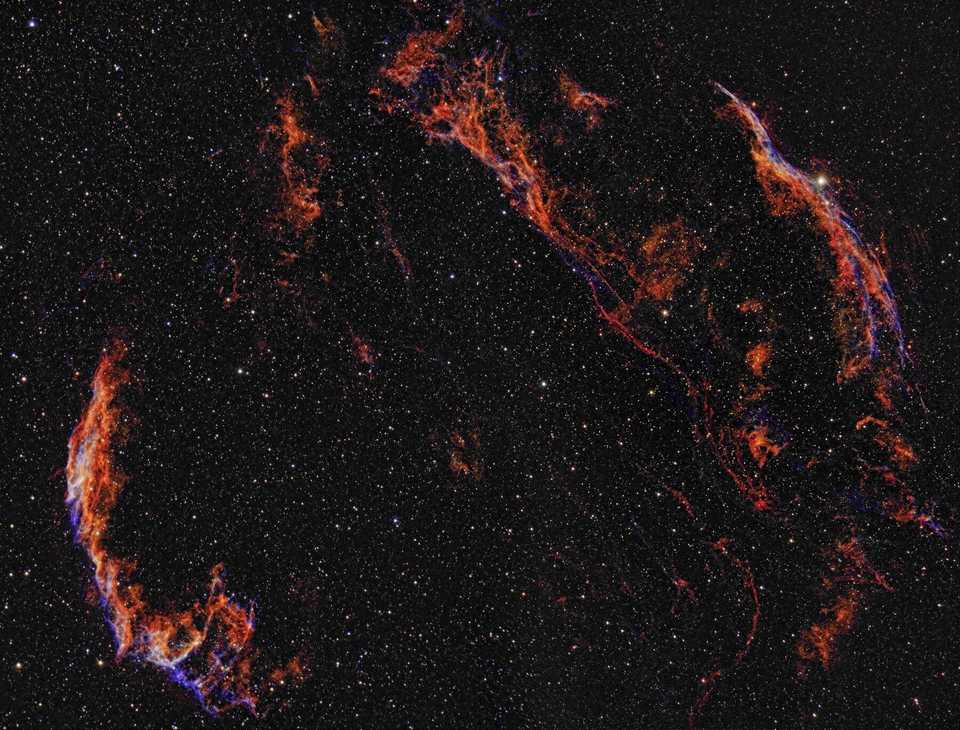
Another highlight was the Pillars of Creation in M16, the Eagle Nebula. M16 itself was stunning through so much aperture, as impressive as the Orion Nebula through smaller scopes. Hunting down the Pillars was a challenge, requiring carefully noting the star fields in the eyepiece and comparing it to the field shown in Steve’s laptop running Skytools 4. After we were confident we were looking at the right place, we went back and forth between the laptop and the eyepiece to confirm the two very subtle dark bands.
In the image below of the Pillars, I was able to observe the two dust lanes to the right of the bright star, but not the larger one on the left. These ghostly tendrils were much smaller and more elusive than the Horsehead nebula.
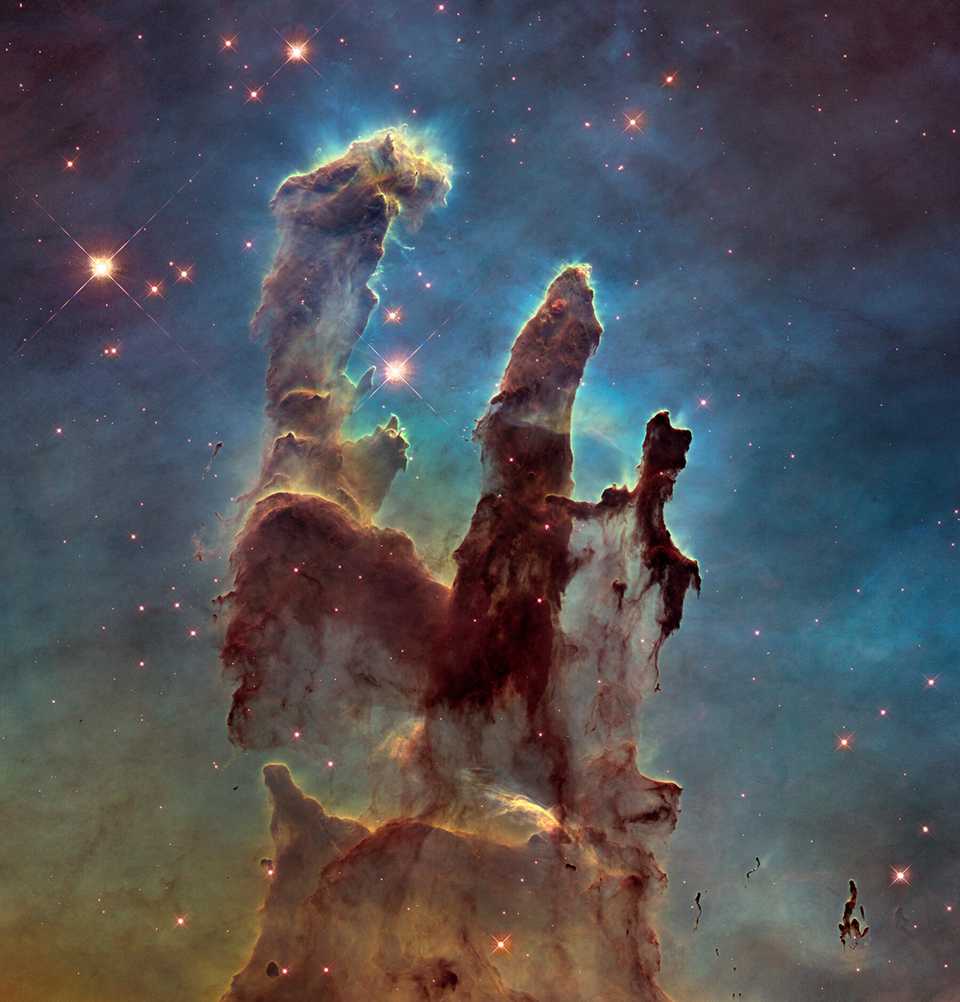
The most memorable views for me at the Oregon Star Party were through Mel Bartel’s 30”. One of the motivations for me to attend OSP was to meet Mel and observe through his massive scope; he’s an exceptional mirror and telescope maker, pushing the boundaries of creating “fast” optics created from thin meniscus mirrors that are highly curved, which provide wider fields of view and a shorter overall telescope that doesn’t require a 16-foot orchard ladder to reach the eyepiece.
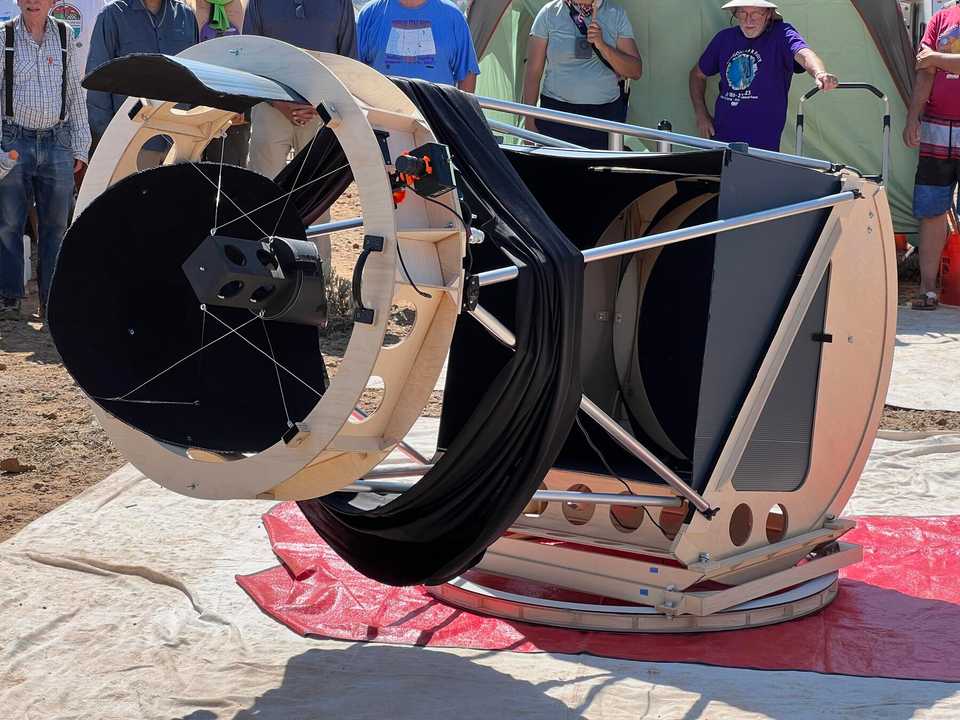
There was understandably a small crowd of excited folks around Mel’s scope, and I waited patiently in line to view M13, the great Hercelus Globular Cluster, one of the crowning jewels of the northern hemisphere.
The first thing that struck me was how sharp the stars looked; building a 30” f/2.7 primary mirror free of spherical aberration and astigmatism is extraordinarily difficult. The next thing I noticed was how overwhelmingly bright and colourful the stars in M13 looked. Everywhere I looked, nearly a million stars glittered in blue and yellow and gold and red. Mel told us to look for the integrated flux nebula (IFN) arcing around M13, and I could indeed see the whispy faint nebulousity extending around the globular. No photo of M13 that I’ve seen does this view justice - it needs to be experienced at the eyepiece.
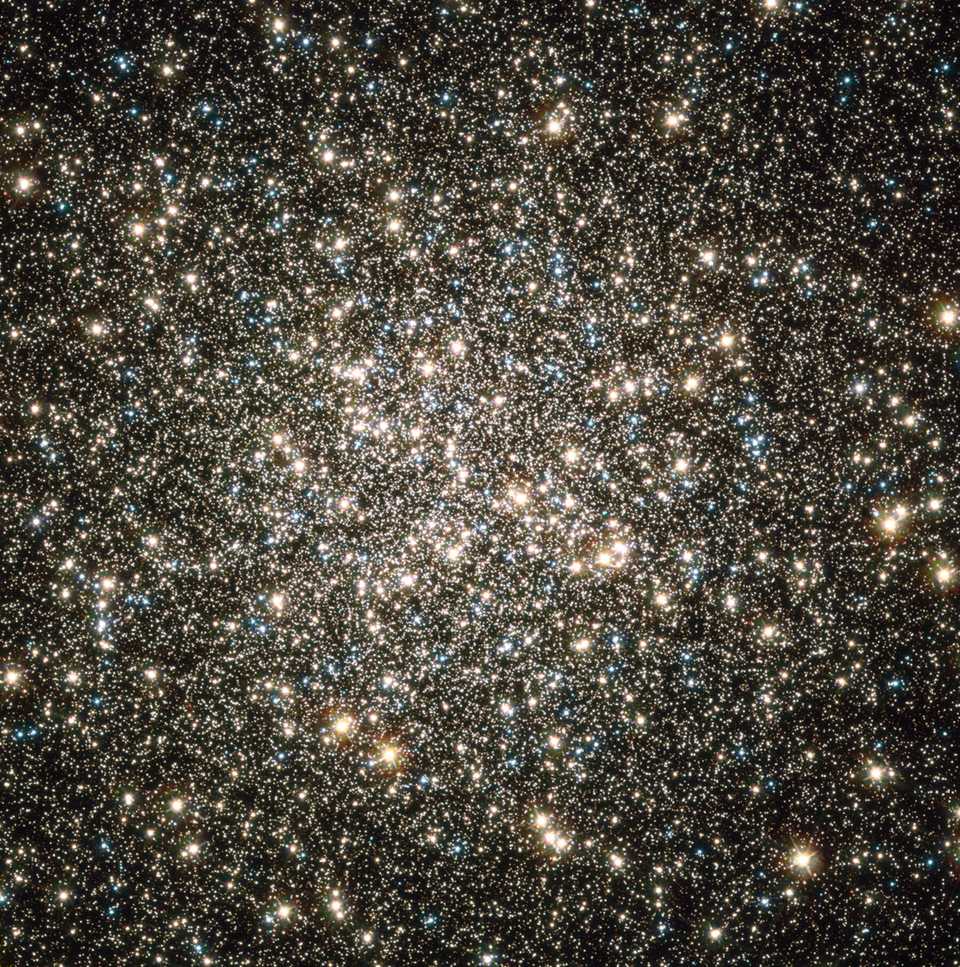
Next, Mel showed us the Ring Nebula, M57. Although the scope was at low power, I could immediately see that the outer portion of the Ring Nebula was “on fire” with a haunting red that went all the way around. To the layperson used to seeing pictures of these objects, seeing red in the Ring Nebula may sound like no big deal, but for me, having observed this object countless times before and never having seen any hint of colour, and seeing it so plainly here, the experience was transformative.

The Andromeda Galaxy, M31, was also stunning. I could start to make out some of the textures in the two big dust lanes, looking 3-dimensional with an obvious tilt. The galaxy extended on and on as I nudged the scope. In these big Dobsonians, the views are very engaging, with so much detail that it’s easy to get lost in specific regions.

We also spent some time observing the Ring Nebula at very high power (>1200x) with Steve’s superb 22” scope. He had built the scope himself (out of metal!) with the Sitech drive system, meaning that the Ring remained rock steady in the eyepiece at this absurd power for extended periods. On a particularly transparent and steady night, the normally elusive central star of the Ring was plainly visible, direct vision, and I’m 60% sure that I saw the very difficult-to-observe 2nd central star (magnitude 16.2) hovered in and out of view. Due to the background nebulousity of the Ring, both the central star and this 2nd star are harder to observe than the magnitude may suggest.
Frustratingly, the nearby galaxy IC 1296 eluded us despite extended time searching for it. Either this galaxy is much fainter than we expected or we were searching in the wrong place!
We ended most sessions around early dawn, when only a handful of observers remained still standing and a glimmer of the sun’s rays illuminated the night sky, pointing our scopes to Saturn and Jupiter. I had a particularly memorable view of Saturn through my 15” scope when I paired it with my Baader Maxbright II binoviewers for the first time. Using the Tele Vue 3x Barlow, I realized my scope could reach focus, and the view of Saturn through a pair of the Leica HC PLAN s 10x/22 microscope eyepieces (25mm) knocked my socks off, by far the clearest view of Saturn I had. The faint innermost “C” ring was clearly defined, as was the Cassini division, which looked not so much like a thin line but a large black chasm. I thought I could see just the hints of the elusive Encke division, a hair-thin division near the outer edge of the “A” ring, but I wasn’t entirely confident of this observation. I felt like I could reach out and grab Saturn by the rings, as it was spectacularly defined and 3-dimensional. A great way to end the session.
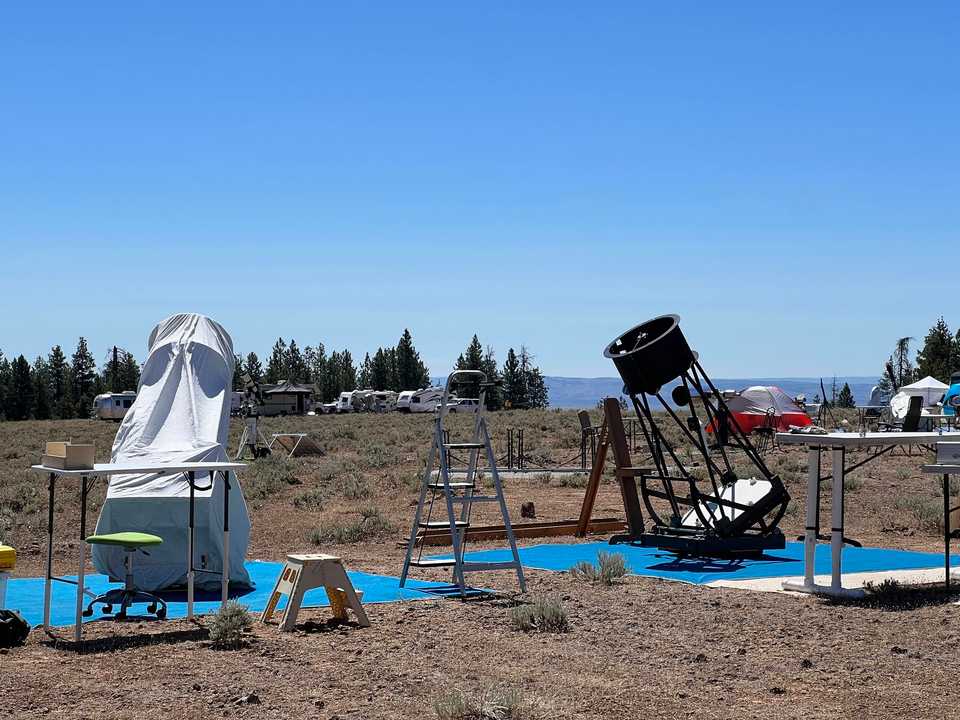
Having 7 nights of clear skies in a row was both a blessing and a curse. I felt very lucky to attend with such spectacular conditions and observed regularly until the skies brightened around 4 am, but sleeping in my car meant that I couldn’t sleep past 9:30 am or so since it got too hot. There was no way to nap during the day either due to the heat, so it took some dedication and willpower for me to stay up and observe for all of the nights.

The hardest part of OSP is trying to stay cool during the day. Although temperatures weren’t unbearable, the sun was relentless in the desert conditions, and I escaped under Dave and Steve’s RV awnings. The next hardest part was to attempt to do dishes with limited water, as I was worried about running out of water until I found out several days later that OSP had water for sale.

I did manage to cool some decent meals, making scrambled eggs with sausage, ham, bell peppers, salsa, and feta cheese, as well as some tasty wraps and salads. I also ate tons of fruits including apples, oranges, and Mandarin oranges, which were essential in keeping me hydrated.
I also volunteered for various positions during the day, including manning the ice truck, which involved exchanging ice tickets with 20-lb bags of ice. It was while I was sitting right by the ice truck that I saw out of the corner of my eye a massive dust devil form out of nowhere, knocking over some tables and chairs off in the distance, and accelerating straight towards me. I thankfully had time to run out of its destructive path, but the canopy tent that I had been sitting under did not, and it, along with the 4 large buckets of rocks holding it down, went momentarily airborne and shifted several meters.
It continued its destructive path, hitting the vendor booth next door; the poor fella did not have time to run away and reported being lifted out of his chair. The vendor’s canopy went fully airborne, rising dozens of meters into the air and landing with a thud on a truck 30 meters away. Fortunately, no one was hurt, although it did knock over a couple of telescopes. Dust devils are no joke!

Another highlight during the day was Mel’s Oregon Star Party Telescope Walkabout, where attendees showed off the telescopes they had built and explained why they made the design choices that they did. You can read Mel’s write-up about it here.
I left the Oregon Star Party very sleep-deprived and yet satisfied with the friends I made, the astonishing views I had, and the inspiration I got for building my future telescope(s). I enrolled in Mel’s 16” f/3 mirror-making class starting this fall and look forward to making bigger and bigger scopes in the future.
And finally, some tips for people who are thinking of attending the Oregon Star Party:
- Bring aluminet to create shade - this works far better than tarps due to the windy conditions.
- Be wary of dust devils. They form out of nowhere and can be destructive. One hit my scope and knocked it over - in retrospect I should have staked my scope down during the day.
- Bring lots of water. Next year, I’ll bring at least 60 liters.
- Bring nails and a hammer. You’ll need them for staking in the tough dry ground.
- Talk to people and make friends. Everyone there is passionate about astronomy and so are you.
- Walk around at night and don’t be afraid to ask if you can take a look through other people’s scopes. Especially the big Dobs, but be warned: aperture fever.
